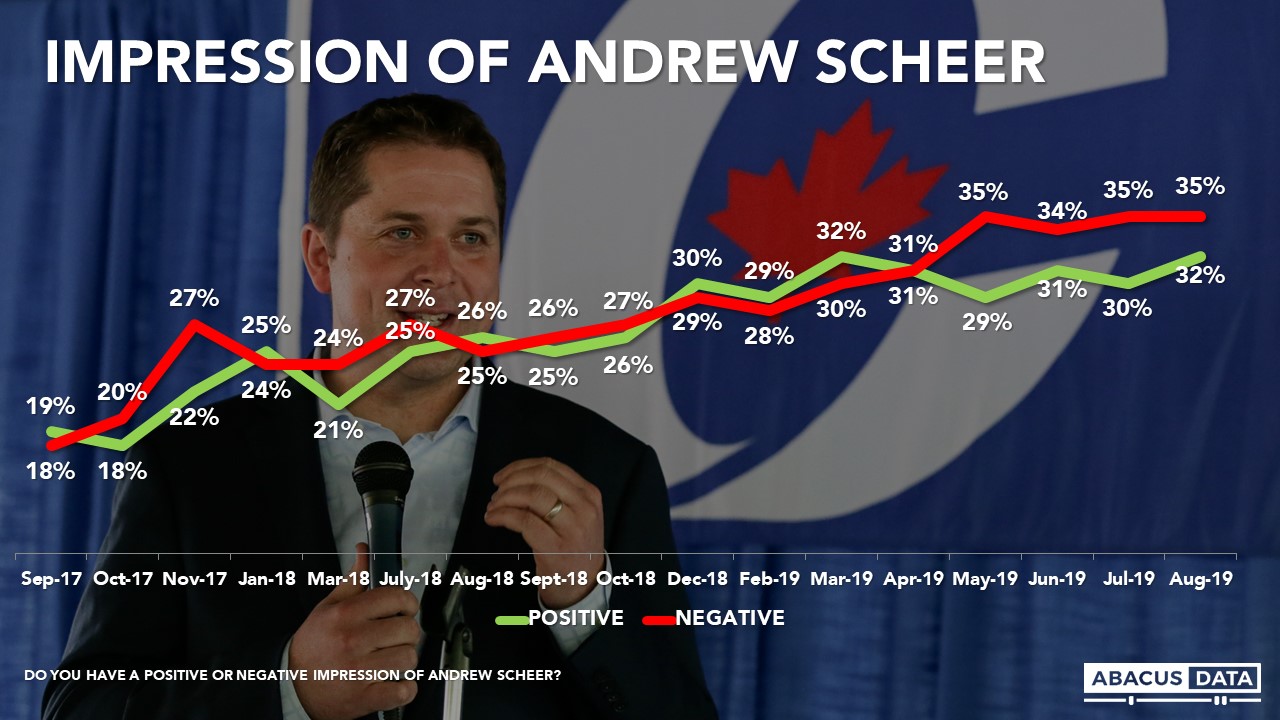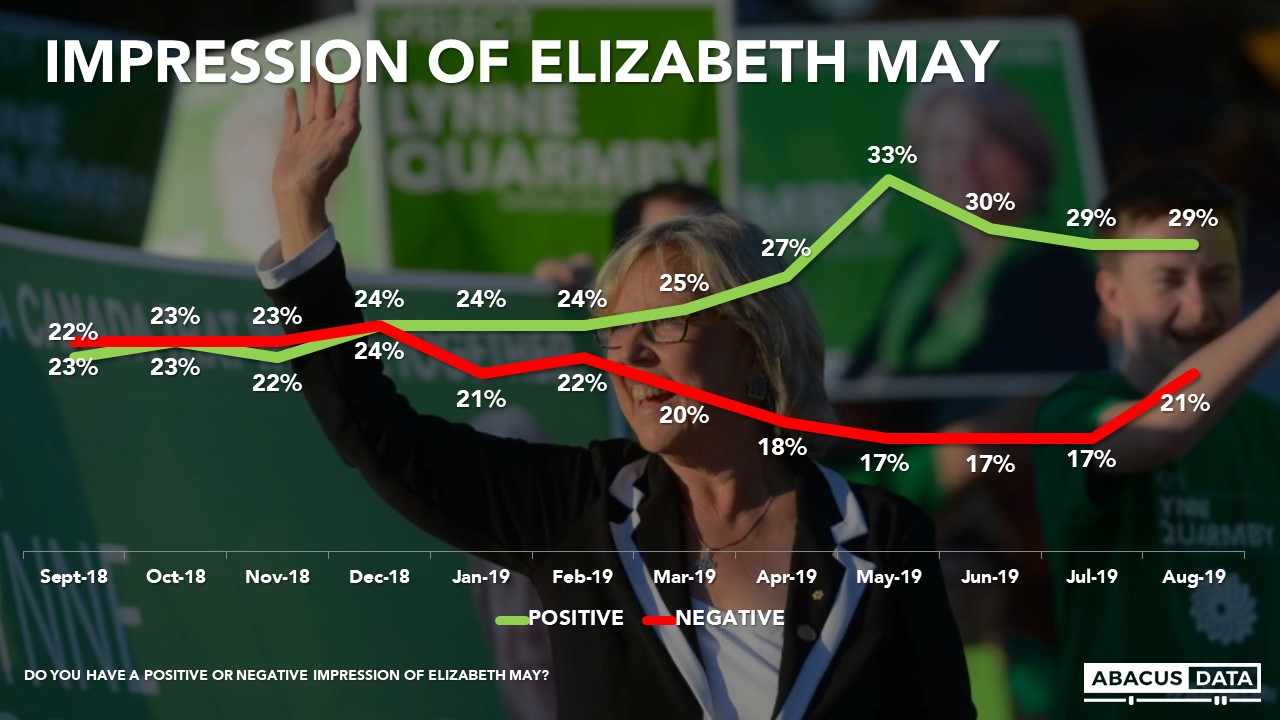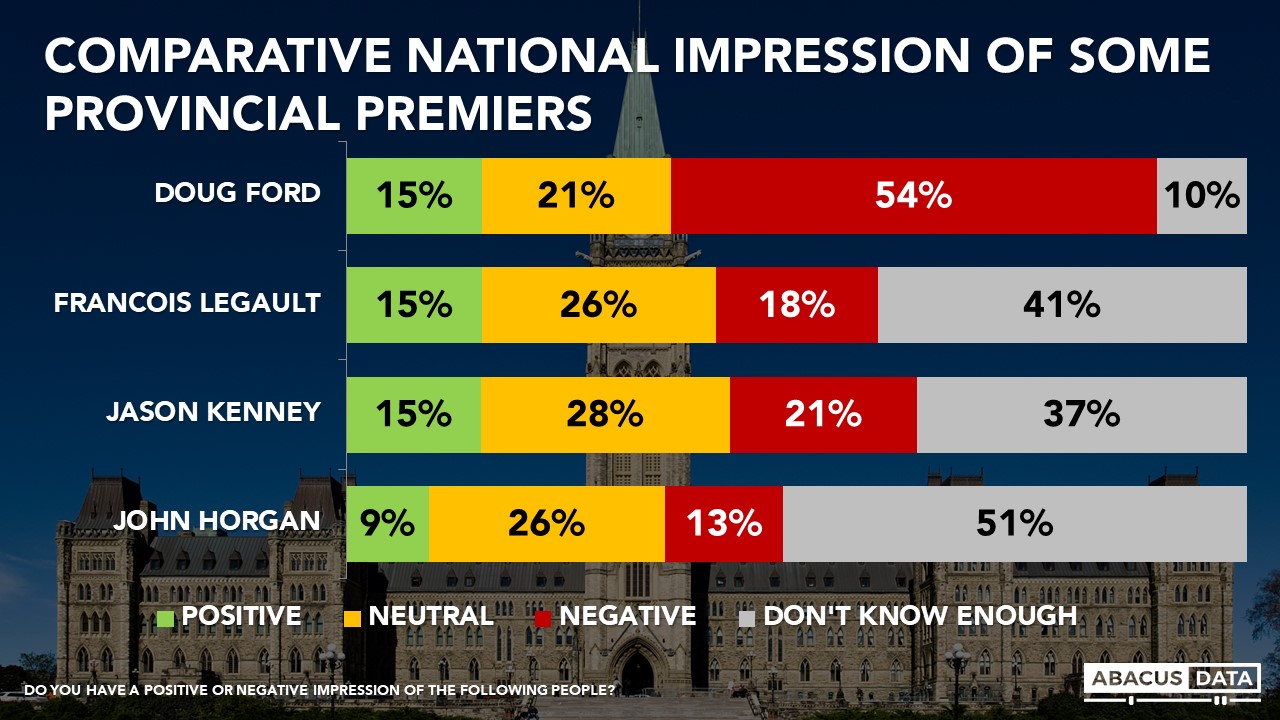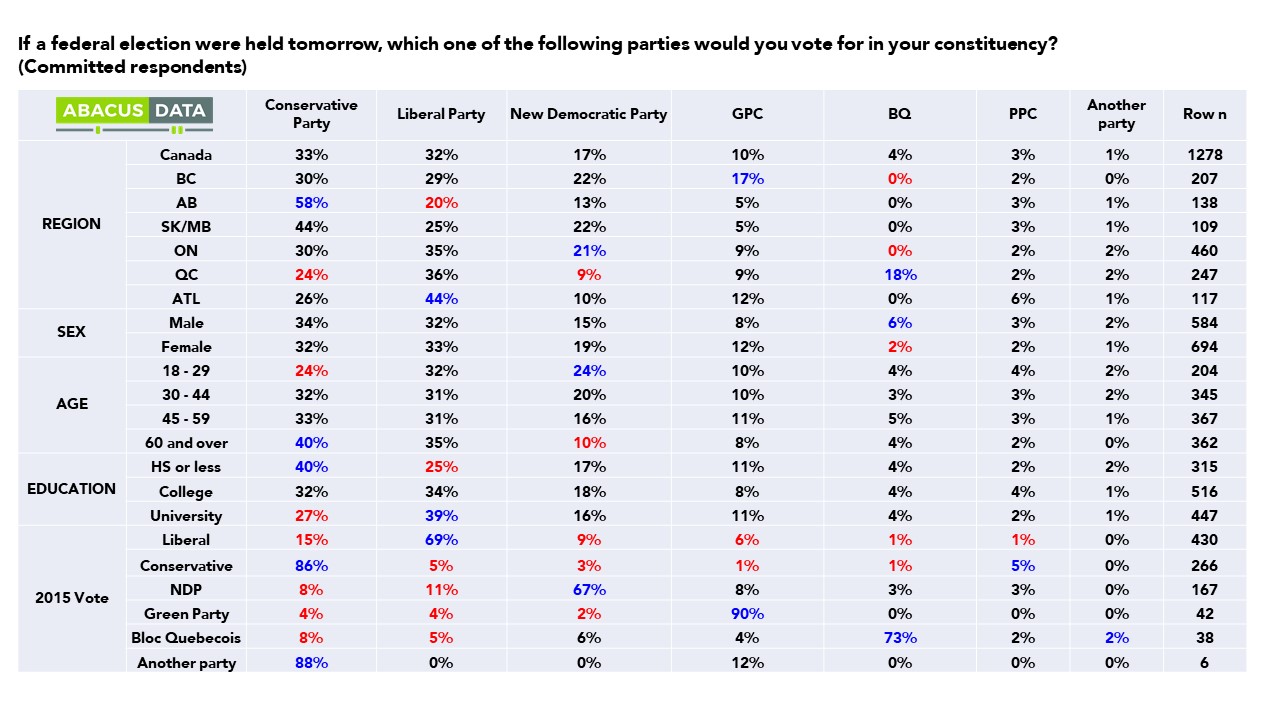Dead heat in national support as the federal election approaches
August 10, 2019

In an election held today, the Conservatives (33%) and the Liberal Party (32%) would match each other in national support. The regional breakdowns of support tend to favour the Liberals at this moment, with Justin Trudeau’s party leading east of Manitoba and tied with the Conservatives in BC. The Conservative vote is heavily concentrated in the Prairies.

The accessible voter pools continue to show the Liberals, Conservatives and NDP all having potential to win support of 45% to 50% of voters nationally. The Green Party potential pool remains higher than in previous years but down a bit from May of this year.

MOOD OF THE COUNTRY
There’s a four-point uptick in the number of people who think the country is on the right track (39%) and a drop in those who say the opposite (41%). The current reading is similar to what we saw in February of this year.

We are also seeing a slight upward movement in performance assessments of the federal government, from a low of 32% approval in April to 36% today.

In the three provinces where the largest number of seats are in play, net government approval went from -13 to -8 in BC, -13 to -5 in Ontario and -2 to +4 in Quebec.
PARTY LEADERS
Feelings about the party leaders show a slight upward movement for Justin Trudeau from March. Today, 36% have a positive feeling about the Liberal leader, while 45% are negative. For Andrew Scheer, the trend lines show that over the last year, positive impressions have climbed by 7 points, but negative impressions have climbed by 9 points. Since April of this year, Mr. Scheer’s negatives are higher than his positives.


NDP leader Jagmeet Singh has 26% positive and 28% negative opinion, and stable patterns for the last few months. Compared to August of last year, the NDP leader has seen a 4-point gain in positive feelings and a 2-point rise in negatives.

For Green Party leader Elizabeth May our latest result shows a 4-point increase in negative feelings. Today 29% say they have a positive view of Ms. May, and 21% negative.

Regionally, Mr. Trudeau’s net approval is -6 in BC, -41 in the Prairies, -7 in Ontario, +5 in Quebec, and +7 in Atlantic Canada. For Mr. Scheer, it’s -3 in BC, +24 in the Prairies, -11 in Ontario, -6 in Quebec, and -10 in Atlantic Canada. NDP Leader is above water in BC at +5, -16 in the Prairies, +2 in Ontario, +1 in Quebec, and -11 in Atlantic Canada.
In April, 34% preferred to see Mr. Trudeau win this fall’s election, compared to 33% for Mr. Scheer. Today’s numbers reflect a slight shift towards Mr. Trudeau, who now leads by 6 points on this indicator, although the numbers have been holding pretty steady since June.

We continue to measure the reputation of several provincial premiers, in part to help understand the impact they may have on the federal campaign this fall. The latest results for Doug Ford show that he remains notably unpopular on a national basis and that his negative ratings in Ontario have continued to rise. Today, just 20% of Ontarians surveyed say they have positive feelings about Premier Ford, compared to 65% who are negative.


UPSHOT
According to Bruce Anderson: “After a rough winter for the Liberals and a period of opportunity for growth for the Conservatives, the race remains very close. There were more headwinds from the Liberal standpoint in March and tailwinds for the Conservatives, and now this may have changed a bit. The safest bet at this point is to assume that more shifting and volatility is likely – but also that the focal point last winter of SNC-Lavalin is no longer a preoccupying topic and major influence on political choice.”
According to David Coletto: “The stalemate continues for another month. The level of stability in the horserace overshadows some movement over the past few months in some of the key leading indicators favouring the incumbent Liberals. The mood of the country may be starting to come out of its post-SNC funk and comparison with what’s happening in other parts of the world, especially in the US and the UK, may be lifting Canadians’ spirits.
All bets are off on how this election ends, but the regional picture gives the Liberals a slight advantage with leads in Ontario and Quebec.”
METHODOLOGY
Our survey was conducted online with 1,422 Canadians aged 18 and over from August 2 to 6, 2019. A random sample of panellists was invited to complete the survey from a set of partner panels based on the Lucid exchange platform. These partners are double opt-in survey panels, blended to manage out potential skews in the data from a single source.

The margin of error for a comparable probability-based random sample of the same size is +/- 2.7%, 19 times out of 20. The data were weighted according to census data to ensure that the sample matched Canada’s population according to age, gender, educational attainment, and region. Totals may not add up to 100 due to rounding.
ABOUT ABACUS DATA
We are the only research and strategy firm that helps organizations respond to the disruptive risks and opportunities in a world where demographics and technology are changing more quickly than ever.
We are an innovative, fast-growing public opinion and marketing research consultancy. We use the latest technology, sound science, and deep experience to generate top-flight research-based advice to our clients. We offer global research capacity with a strong focus on customer service, attention to detail and exceptional value.
Contact us with any questions.
Find out more about how we can help your organization by downloading our corporate profile and service offering.




